Le 12 octobre 2022 An Rong a publié le tweet suivant sur Twitter pour inviter le public à compléter un dessin d’une tête et de pieds d’un dinosaure de manière à prouver que l’image résultante n’a pas été générée par une intelligence artificielle (AI).
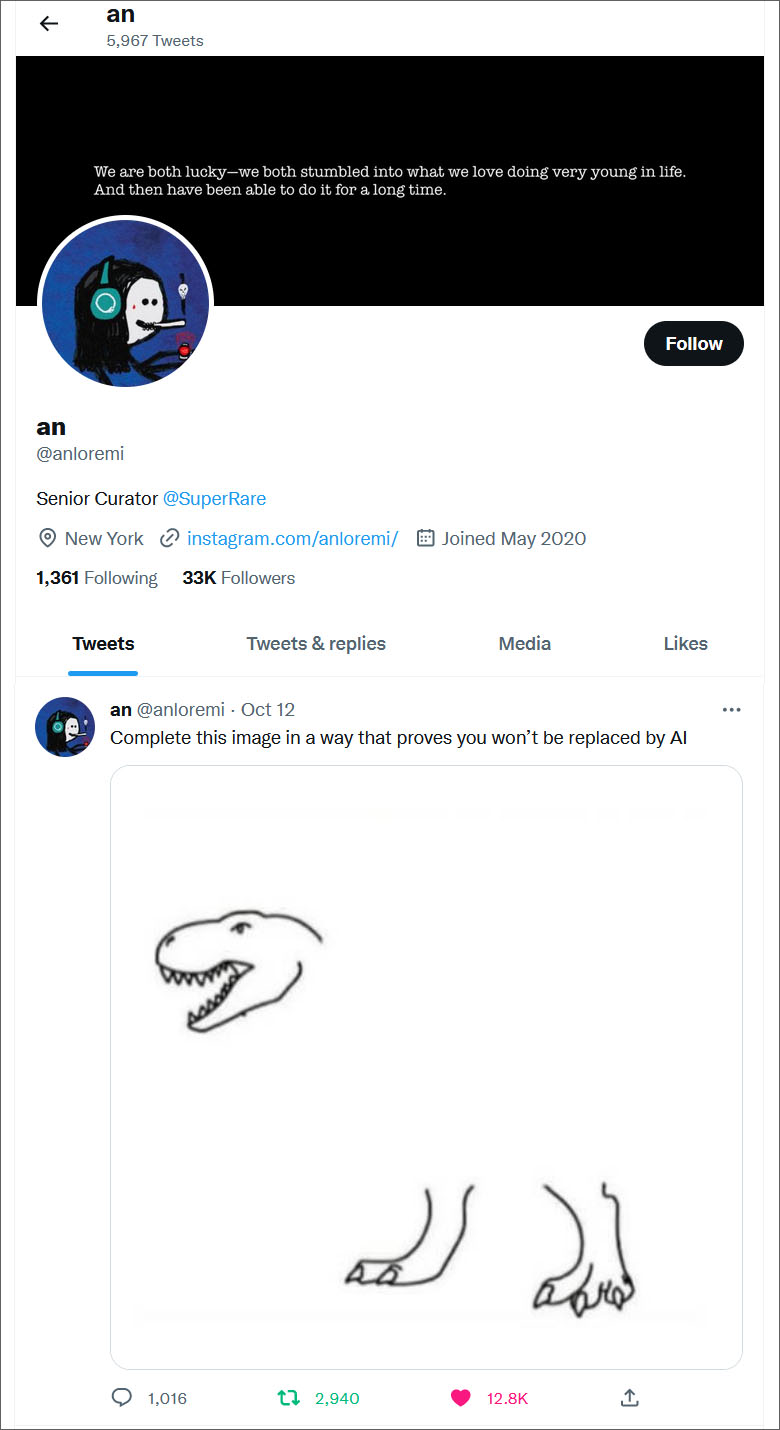
Le Tweet a connu un grand succès avec 12.800 Likes, presque 3000 retweets et plus que 1000 réponses, incluant de nombreuses créations d’images. Le tweet a été lancé dans le contexte des modèles neuronaux d’art génératif, basés sur la technologie Stable Diffusion et supportant la fonction inPainting.

An Rong à obtenu en 2019 son diplôme d’études muséales à l’Université de New York. Son travail de fin d’études portait sur l’art et les blockchains. Après ses études elle a joint la start-up SuperRare où elle est actuellement directeur des arts et des programmes culturels. Elle considère que pouvoir travailler chaque jour avec du CryptoArt et des NFTs et de faire la connaissance de jeunes artistes brillants dans le domaine de l’art digital est un poste de rêve.
An Rong est rédactrice du magazine SuperRare et du bulletin d’information correspondant. En mai 2022 elle a présenté à SoHo, New York, la première galerie éphémère brique et mortier de la plateforme NFT SupeRare. Elle était également curateur de l’exposition Invisible Cities en 2021, ensemble avec Elisabeth Johs, et de l’exposition Un-Realism en 2022, ensemble avec Fabio Giampietro et Skygolpe.

En ce qui concerne l’image du dinosaure à compléter, mes petits-enfants ont ajouté les contours du corps et coloré le dessin. Le dinosaure du milieu vient de dévorer une proie, les taches rouges sont du sang qui a coulé.
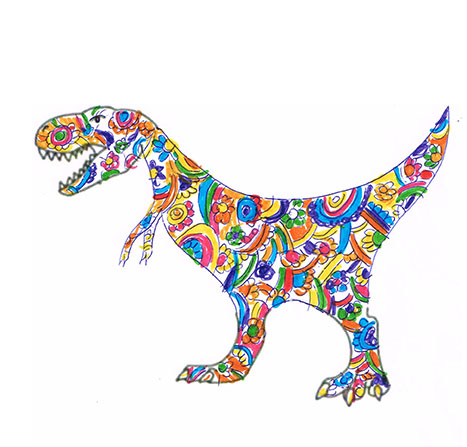

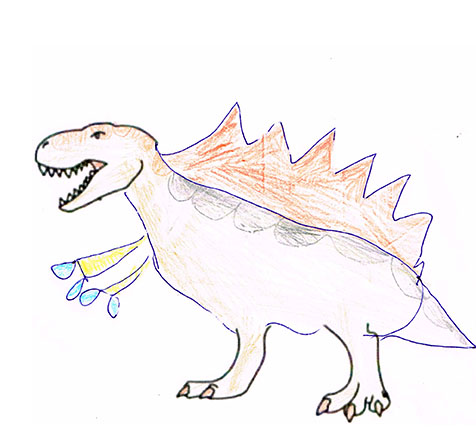
Les images complétées par des adultes, suite à l’invitation de An Rong, sont plus astucieuses. J’ai assemblé ci-après un collage avec 30 dessins en noir et blanc. On peut retrouver les noms des artistes afférents sur Twitter dans les réponses au tweet original.

L’affichage qui suit montre 25 dessins complétés supplémentaires, mais cette fois en couleur. Comme expliqué ci-avant, le lecteur intéressé trouve les noms des artistes sur Twitter.
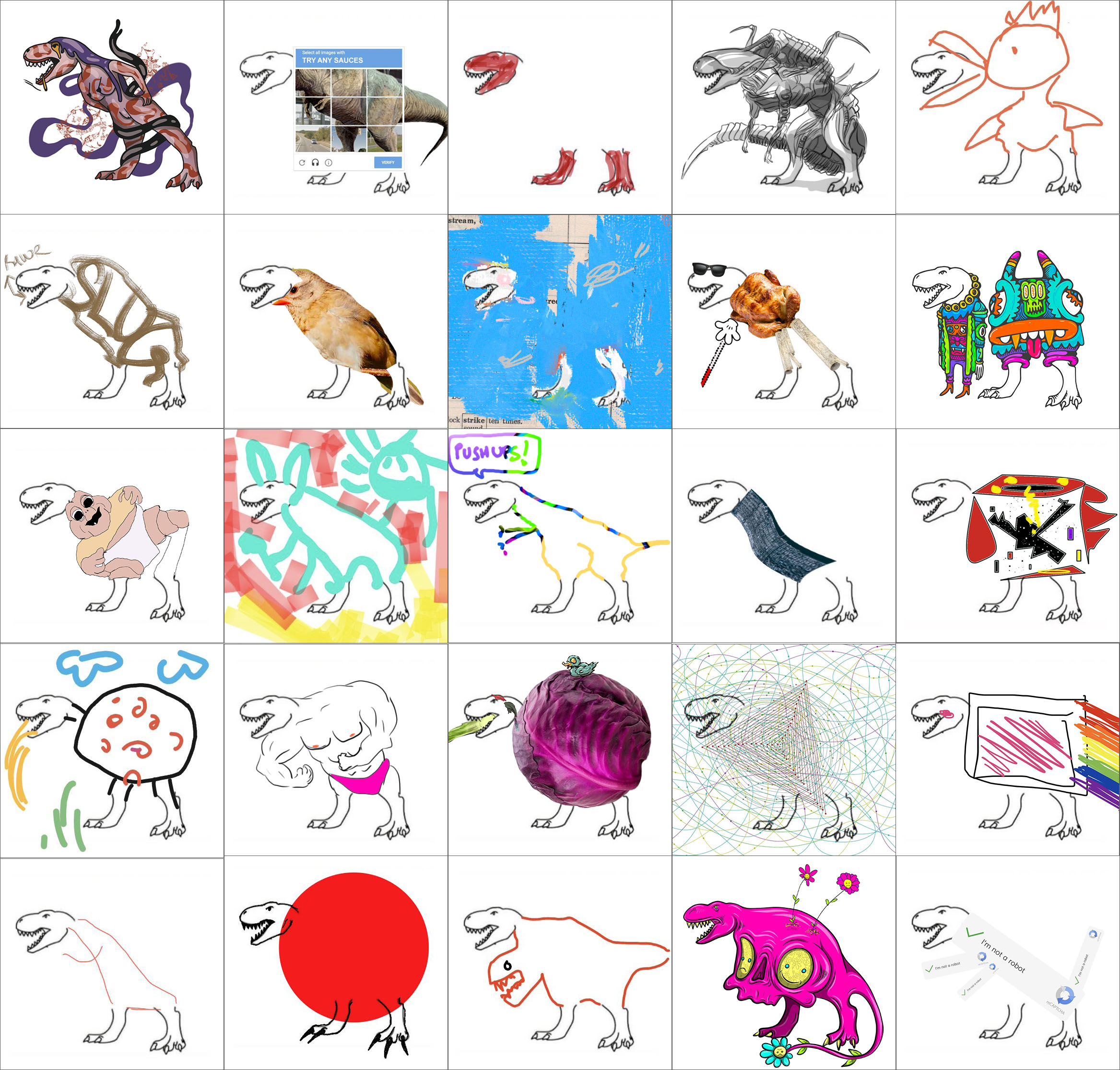
Et pour ceux qui se demandent quels types de dessins sont générés par un modèle AI, j’ai assemblé ci-après quelques images de dinosaures complétées par DALLE*2, avec la description entrée “dinosaur with flowers” :
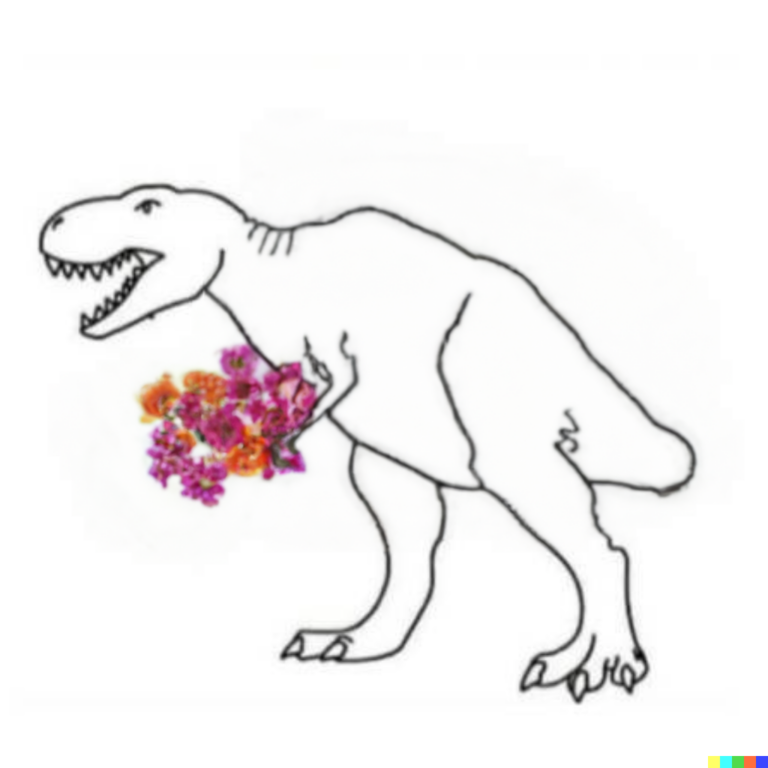




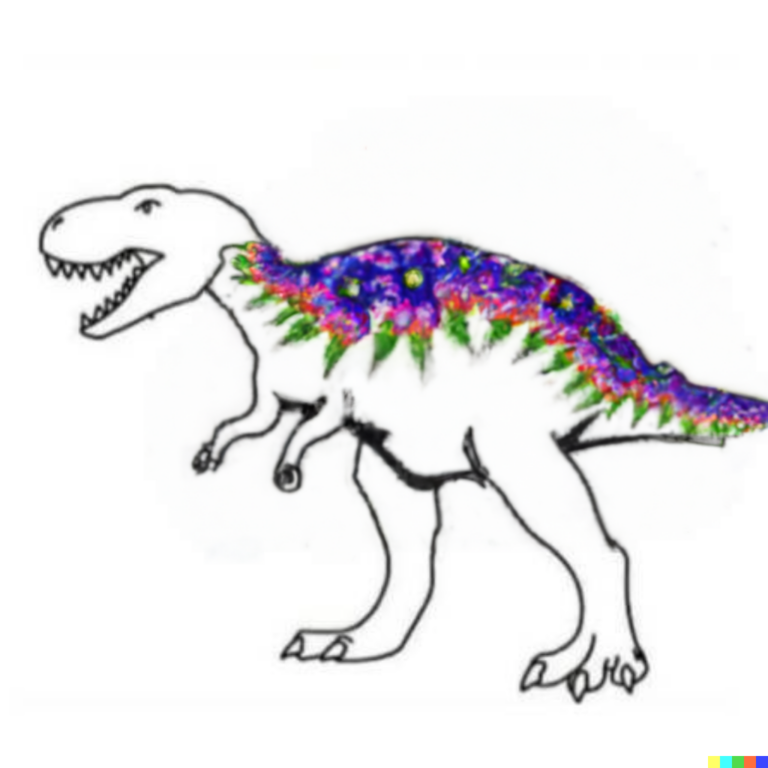
Images complétées avec le modèle DALLE*2 de OpenAi
Bibliography
- An Rong Creates New Narratives Around Digital Art at SuperRare, Whitewall, 2021
- An Rong director of art and cultural program at SuperRare, Fad Magazine, 2021





